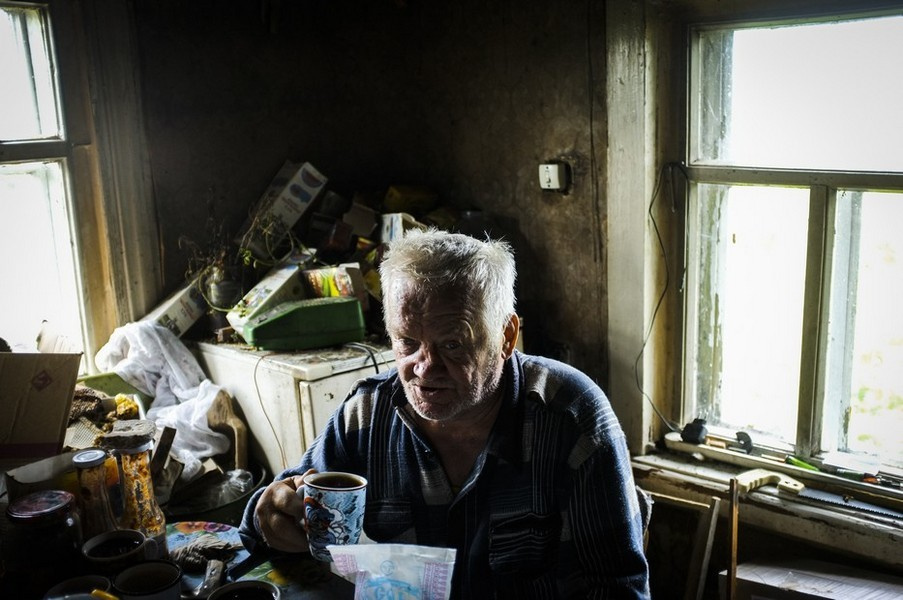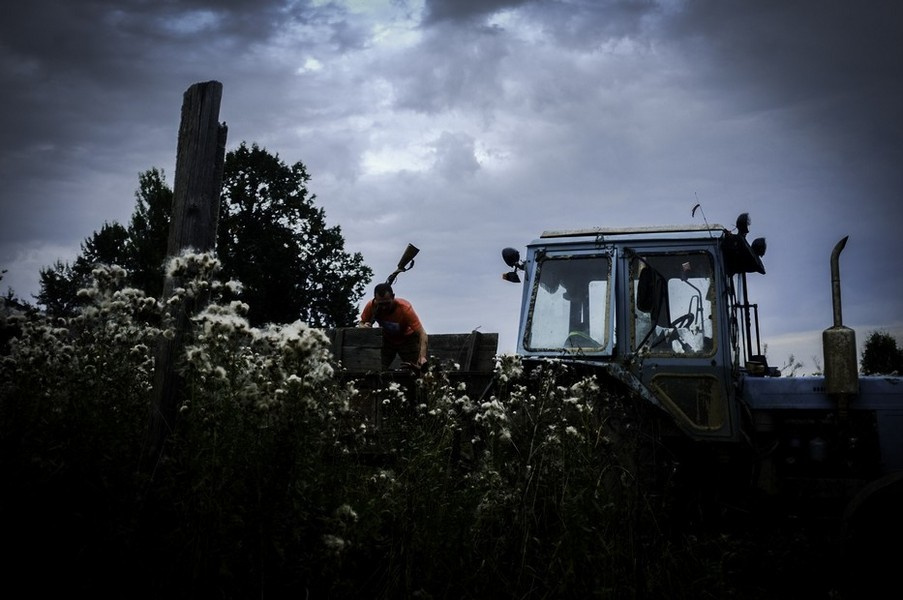В соавторстве с Лизой Жаковой
Только с 2008 по 2014 год в Костромской области в категорию «заброшенных» перешли 214 населенных пунктов. Жители оставили их из-за отсутствия дорог, школ, больниц, зачастую электричества. Те, кто остался, называют эти деревни Пустыней.
Мы разыскали людей, которые остаются последними жителями своих опустевших деревень, чтобы увидеть, как они живут и понять, почему они остаются там.
We found people who remain the last inhabitants of the deserted villages to see how they live and to understand why they have stayed there.
Sasha
Elyakovo Village. Sasha grew up here. In winter he works as a stoker in the school of Vedenskoye where his parents live, in summer he does odd jobs around.
“It’s interesting there were so many people around. But time flies, that’s it.
I used to hunt cocks of the wood, and now I can’t find a single grouse.
There were 9 or more houses in Elyakovo. One house burned down, the other one collapsed. I remember 4 houses to be inhabited – our house and 3 more. Everyone left.
I don’t like city at all, I can go for a trip there for 4 days, but I can’t stand more than that.
There is a cemestry near the church, all the villagers are buried there. My grandma and uncle too. That’s a pity.”
Alexey Fedorovich and Zoya Timofeevna Chernovs
Assorino Village. The only inhabited house is occupied by farmer Alexey Chernov and his wife Zoya. Alexey owns nearly 20 ha of land – field and forest, the family keeps cows, pigs, sheep, hens, geese, an apiary.
“It’s hard for just the two of us to cope with everything, but during the summer our son and his wife come here to help us, bring the grandchildren – they help to haymake and to do housework.
There used to be more livestock - cows and sheep. We take them to the market. Zoya puts weighing scale, business starts by 9.
We should have stopped working, we have no energy left already. But we will regret to stop.
There were some binges, come to think of it. The problem is I have a screw loose. If there is some alcohol left, and I need to work – the hell I’m gonna work. If you drink again, you need more. And how can you work when you are drunk?
That’s how it is. Life is too short, you know. “
Lecha
Spirdovo Village. Here lives Lecha, Donbass miner. Lecha has one more house in the inhabited village Konyshevo, but he doesn’t hurry to move there – he feels more comfortable living far away from other people. Sometimes he has guests, hunter friends.
“I arrived there when I was twenty something. Closed my eyes, pointed at the map and hit Kostroma.
I get minimum pension payment, but it’s enough for me. We have groundwater, I don’t need to pay electricity bill. All the money I get I spent on food and alcohol. If you want to earn something – pick berries or mushrooms. Go fishing, set traps, do as you wish – no need to go anywhere.
Those guys, hunters, drunk some and don’t need any hunting. Just shoot the bottles and leave.
I’ve been on a binge for 10 days. Take 6-7 bottles and I’m already wasted. Nevertheless, I’ll go and look for something more to drink. I buy all homemade vodka. A day earlier, two days later – we are all headed that way. What’s the difference whether I die today or 10 years later – no difference at all.
I’ve been married 3 times here. I have 10 children! All the girls liked me.
I don’t know why everyone is leaving! They had everything they need there – they grew and kept everything themselves. Perestroyka comes, and everybody fled to the city. They harried the villages. And there were a lot of villages there.”












































